Although this blog is dedicated to respirators, air quality, and pollution, I have never actually discussed why we need to be concerned about air pollution.
In this post, I will be discussing why air pollution is a danger and why it is something that we need to protect ourselves from.
For ways to protect yourself from air pollution, please refer to this comparison of the best reusable masks.
If you are looking for a more condensed form of many of the facts included here, you can read this article on facts about air pollution.
This post contains affiliate links. For more information, please refer to my affiliate disclaimer.
Information on this blog is for informational purposes only. Readers are encouraged to confirm the information herein with other sources. Furthermore, this information is not intended to replace medical advice from professionals. This website assumes no responsibility for the accuracy of the information, which is subject to change without notice.
Why Air Pollution Should Worry You

Smog over Hong Kong.
Air pollution is something that is often overlooked, and something that is rarely even mentioned.
In some countries, it’s a known issue – China, Mexico and India to name a few. However, many of us consider ourselves safe simply because we live in the USA, Europe, or Australia.
This is far from true. While air pollution is a bigger issue in some regions of the world compared to others, nearly everyone is affected by airborne pollution to some degree.
9 out of every 10 people in the world breathe polluted air (WHO). 90%. That’s an incredibly large percentage and shows how few places are safe from this modern threat.
‘In cities of high-income countries in Europe, air pollution has been shown to lower average life expectancy by anywhere between 2 and 24 months, depending on pollution levels.’ (WHO).
Although I don’t want to cause unnecessary worry, it’s important to not discount air pollution simply because you think you are safe. In fact, air pollution is one of the biggest killers in the world today.
‘Pollution is the largest environmental cause of disease and premature death in the world today. Diseases caused by pollution were responsible for an estimated 9 million premature deaths in 2015—16% of all deaths worldwide— three times more deaths than from AIDS, tuberculosis, and malaria combined and 15 times more than from all wars and other forms of violence.’ (The Lancet Commission on Pollution and Health)
All of this is to say that air pollution is incredibly dangerous, yet something that is more often than not overlooked.
How is it that the largest cause of deaths today is something that is rarely even considered?
Read more: How to find cheap respirators.
Why Is Air Pollution Overlooked?
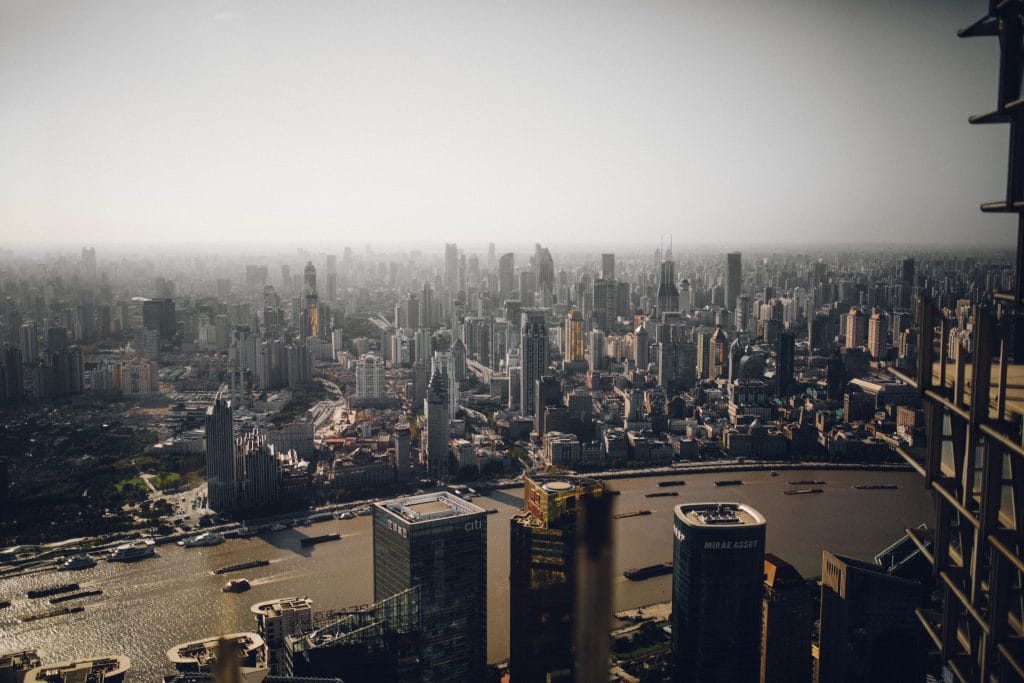
Air pollution in Shanghai. Since we live with pollutants, we get accustomed to them.
Although I have no evidence for this, I have a few theories as to why the danger of air pollution is overlooked. There are not many scientific resources to refer to, so these are my own thoughts and opinions.
Perhaps the biggest reason that air pollution is often overlooked is because it is a modern issue. While air pollution has existed in the past, we have only recently begun to link the impact of air pollution on health.
Further, it’s only with recent technology that we are able to accurately measure the ultra-fine PM2.5 particles that are in the air.
Luckily, we are now more aware of the issue and many resources such as the Air Quality Index have been created to help us be wary of the dangers of air pollution.
However, after living in Korea for 4 years, I have found that air pollution is very rarely considered by the locals.
The WHO guidelines state that 25 μg/m3 24-hour mean of PM2.5 is the highest level considered ‘safe’. Over one year, a mean of 10 μg/m3 is considered safe (WHO).
Yet, right now in Seoul, the PM2.5 daily mean has not dropped below 30μg/m3 for days. For the past few days, the average seems to be closer to 40μg/m3.
However, citizens of Seoul rarely wear masks before the AQI reaches around 150 – a level considered very unhealthy.
Why do the majority of people not worry about the dangers of air pollution then? I believe it is because it’s gradual, it’s something that people just learn to live with.
When you live in a city where air pollution is a constant, everyday phenomenon, you begin to get accustomed to it. This is compounded by the fact that air pollution doesn’t hurt you instantly, it’s a slow danger.
Since there is no obvious, instant threat to health, it seems to lower the perception of danger. The mentality that I have seen and heard expressed by many is ‘it won’t affect me now, or even in ten years time, so why should I worry?’.
This quote best represents what I am trying to say: People are usually unaware of how long-term exposure affects their health or worsens their medical problems over time. (Air Pollution and Noncommunicable Diseases)
To conclude, air pollution is often overlooked because it is a new threat that we are facing. While not new in danger, our understanding of the dangers is far greater than ever before.
On the level of the general public, the dangers of air pollution seem to be overlooked because of the gradualness of the health impacts.
Best N95 rated respirators – 3M 8511 N95 | 3M 8210 N95
Dangers of Air Pollution
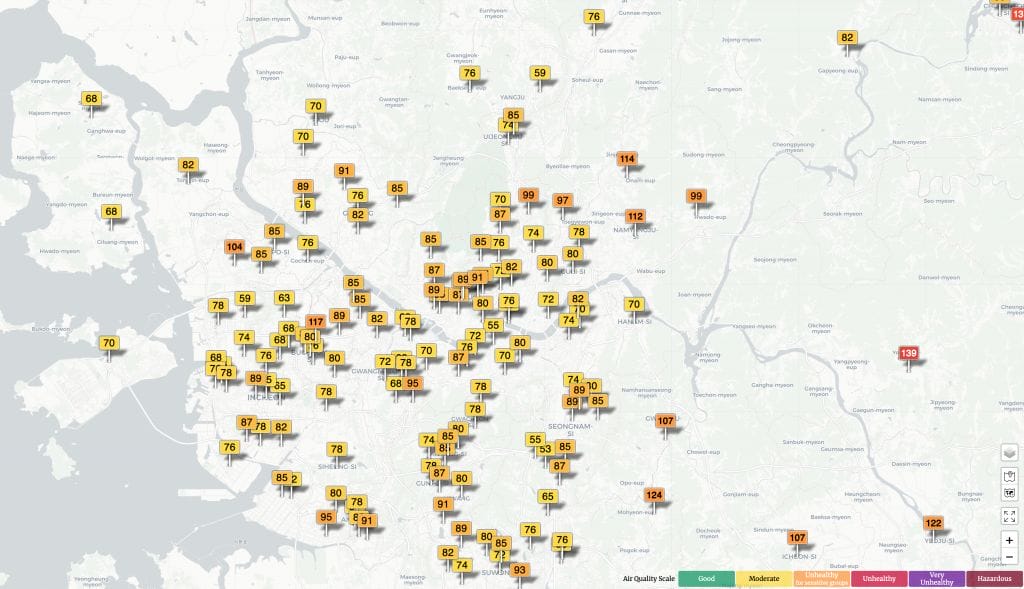
Air pollution on a typical day in Seoul, South Korea.
With all of this being said, what exactly are the dangers of air pollution? How does fine dust impact our bodies and in turn, our health?
A recent article released by TheGuardian provides a visualisation showing how air pollution impacts the human body.
To summarise the article, however, air pollution damages virtually every cell in the human body. No matter who you are, and whether or not you have pre-existing health conditions.
Air pollution has been found to damage everything in the human body from our brains to our bones. Every organ in the body has been recently proven to be damaged by air pollution.
Short Term
Air pollution may be associated with symptoms immediately upon exposure, such as coughing, tearing, difficulty breathing, and angina (Air Pollution and Noncommunicable Diseases).
A good list of symptoms that you might notice in short-term exposure to PM10 and PM2.5 has been published by the NSW Government.
- Irritated eyes, nose and throat
- Worsening asthma and lung diseases such as chronic bronchitis (also called chronic obstructive pulmonary disease or COPD)
- Heart attacks and arrhythmias (irregular heart beat) in people with heart disease
- Increases in hospital admissions and premature death due to diseases of the respiratory and cardiovascular systems
Long Term
The long term dangers of air pollution are far more dangerous and well-studied than the short term impacts.
Although recent studies have shown air pollution to be far more damaging than we thought in the past (we now realise it impacts every organ and possibly almost every cell in the human body), air pollution has been considered dangerous for many years.
Long term exposure to air pollution can lead to increased chances of asthma, pneumonia, heart attacks, strokes, and diabetes (Harvard).
While these health effects are relatively well known, there are also some adverse effects which are much less known. For example, the impact of air pollution on depression and suicide rates. “We’ve shown that air pollution could be causing substantial harm to our mental health, making the case for cleaning up the air we breathe even more urgent,” said Isobel Braithwaite (TheGuardian).
Even further, air pollution has been proven to have a big impact on cognitive ability. In the short term, it has been proven to reduce test scores (EOS).
Longer-term, it has been shown to be linked to many cognitive diseases such as dementia and Alzheimers.
In addition, long-term exposure to air pollution can cause cancer and damage to the immune, neurological, reproductive, and respiratory systems. In extreme cases, it can even cause death (Massachusetts Department of Environmental Protection).
There are many dangers which aren’t included in this short article, and I highly recommend reading some academic journals to learn more about the dangers.
However, I want to show that air pollution is a danger. A very harmful one. It is important to do what we can to minimise our exposure to these dangerous particles.
Read more: monitor air pollution with the Flow 2 portable air quality monitor.
Aspects of Air Pollution
Although PM2.5 particles are often the most discussed aspect of air pollution, they are far from the only danger. Air pollution is generally considered to be made up of a few different particles and gases.
Sulphur dioxide, Nitrogen dioxide, Ozone, Carbon monoxide, PM10 and PM2.5 all add to air pollution and all represent different dangers for the breather. For more information on the specific ‘safe’ levels of each pollutant, please refer to this article on Air Quality Index.
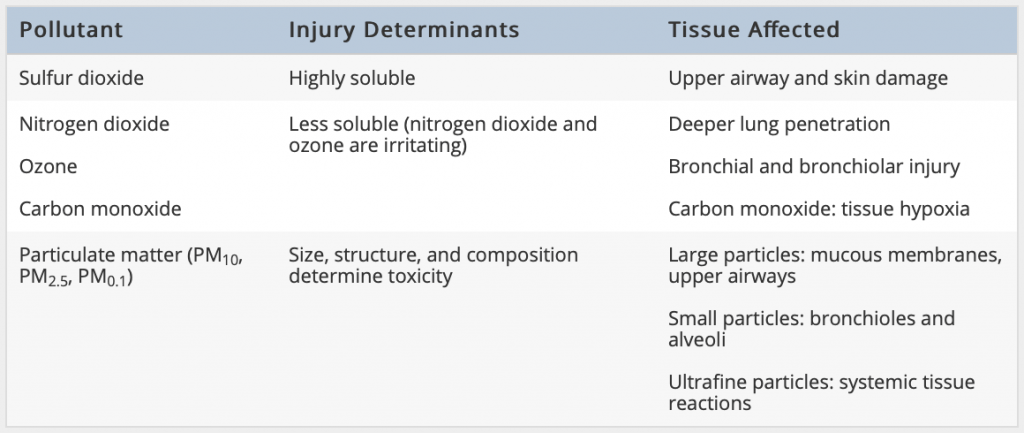
Air Pollution and Noncommunicable Diseases.
The New South Wales Government of Australia has an article which explains the different health effects of each different pollutant. I will summarise the findings here, however, for more detail please refer to the article.
High ozone levels can lead to irritation of the chest, eyes, nose, throat and lower airways. It can also lead to reduced lung function, exacerbation of asthma and chronic respiratory diseases, increased susceptibility to respiratory infections, and can even continue to damage your lungs once the symptoms have disappeared.
High nitrogen dioxide levels can lead to increased susceptibility of lung infections in people with asthma, increased susceptibility to asthma triggers (such as pollen), worsened symptoms of asthma, and airway inflammation in healthy people.
High carbon monoxide levels can lead to flu-like symptoms such as headaches, dizziness, disorientation, and more. It can also lead to chest pain in people with coronary heart disease, impaired vision, dizziness, confusion, and can potentially cause serious health effects on unborn babies.
High sulphur dioxide levels can lead to wheezing, chest tightness and shortness of breath, as well as more frequent asthma attacks for those with asthma and exacerbation of cardiovascular diseases.
Finally, fine dust particles such as PM10 and PM2.5 can lead to many different health conditions, including heart attacks, lung diseases, and reduced life expectancy (in long-term exposures).
All of the different pollutants can potentially be harmful in high levels and/or long exposures. For this reason, it is always better to avoid high concentrations of these pollutants when possible. If it isn’t possible, make sure that you have a respirator and have taken other precautionary measures.
Best N95 rated respirators – 3M 8511 N95 | 3M 8210 N95
Indoor Air Pollution

Indoor air pollution can be caused by many things – including wood fires which many older houses still use.
One of the biggest misconceptions about air pollution is that it only exists outdoors. This is not only untrue, but it’s actually the opposite.
On days of high pollution, it’s common for outdoor particles to get inside. Even if you keep doors and windows closed, particles are capable of getting through gaps.
On top of these outdoor particles that make it inside, there are also many fine particles created indoors.
While some are more known – tobacco smoke and mould spores, for example, there are many more pollutants that exist inside.
- Fuel-burning combustion appliances
- Tobacco products
- Building materials and furnishings as diverse as: deteriorated asbestos-containing insulation, newly installed flooring, upholstery or carpet, cabinetry or furniture made of certain pressed wood products.
- Products for household cleaning and maintenance, personal care, or hobbies
- Central heating and cooling systems and humidification devices
- Excess moisture
- Outdoor sources such as radon, pesticides, outdoor air pollution (Source – United States Environmental Protection Agency).
In fact, indoor air pollution is one of the leading causes of death worldwide, accounting for 1.6 million premature deaths per year (Our World in Data).

For this reason, it is important to make sure that you are not only considering outdoor air pollution, but also that which exists indoors.
There are many ways to reduce air pollution indoors, and actions that you can take range from not using dangerous chemical cleaners inside to purchasing an air purifier and dehumidifier.
How to Prevent Air Pollution Exposure

An indoor air pollution monitor such as the Kaiterra Laser Egg is a good way to monitor air pollution.
There are many actions that can be taken to reduce our overall footprint and to do our part in reducing overall air pollution. However, what can we do right now to prevent our exposure to air pollutants and in turn, prevent the damage to our health?
There are some obvious ways to prevent exposure such as making sure you wear a respirator when you go outdoors, and avoiding exercise on days of heavy pollution. However, there are also some other actions you can take to minimise exposure to harmful pollutants in the air.
- Pay attention to the air quality index. Take note of the air quality before you go outside and act accordingly. If the air is hazardous, don a mask. If the air is highly unhealthy, avoid going outside if possible.
- If you need to exercise, stay away from busy streets and other polluted areas. Staying away from the busiest routes has been proven to be able to half the amount of pollution you breathe (NYTimes)
- Minimise indoor air pollutants where possible. Avoid cleaners and other products that use dangerous chemicals. If possible, avoid smoke indoors and make sure to clean any mould.
- Purchase an air purifier. Even taking all of the above steps to minimise the pollutants indoors, there will always be some that remain. An air purifier is a good option to clean the air.
- Exercise lots. This is best done either indoors or on a day of low pollution. ‘Studies suggest that fitness reduces your susceptibility to the harmful effects of air pollution. Getting more than 2.5 hours a week of vigorous aerobic activity is ideal, but every little bit helps.’ (British Columbia Lung Association).
- Wear a respirator when going outside on days of hazardous pollution. However, a respirator will not be effective unless it is fitted properly and creates a seal with the wearer’s face. Learn more about wearing respirators here.
Fine Dust Respirators
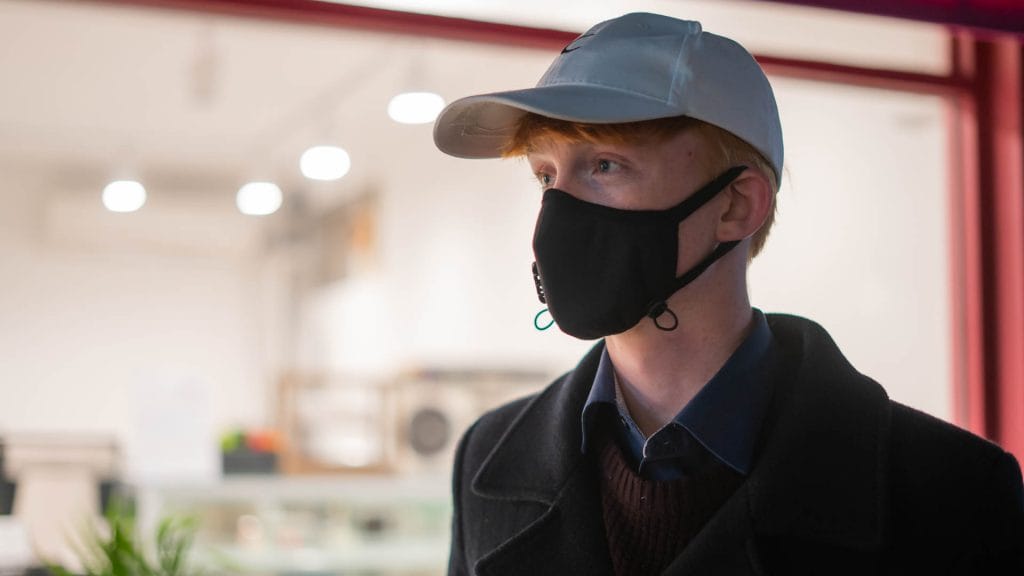
Respirators are one of the best ways to prevent your exposure to air pollution while outdoors.
When purchasing a respirator, make sure to only use those with a respirator rating. These ratings can come in many different forms, however, most respirators in the west will have an N rating such as N95 or N99. To learn more about respirator ratings, please refer to this post.
Listed below are some popular respirators:
Best N95 rated respirators – 3M 8511 N95 | 3M 8210 N95
Purchase KF rated respirators – Fine Tech KF94 Mask | Clean Tech KF94 Mask
Purchase FFP2 respirators – FFP2 Mask Anti-Pollution | FFP3 Respirator Mask
However, all of the above respirators are one-use. If you are looking for a reusable mask, I would recommend checking out this review of Cambridge Mask vs Vogmask.
MeoAir anti-pollution mask review.
Air Purifiers
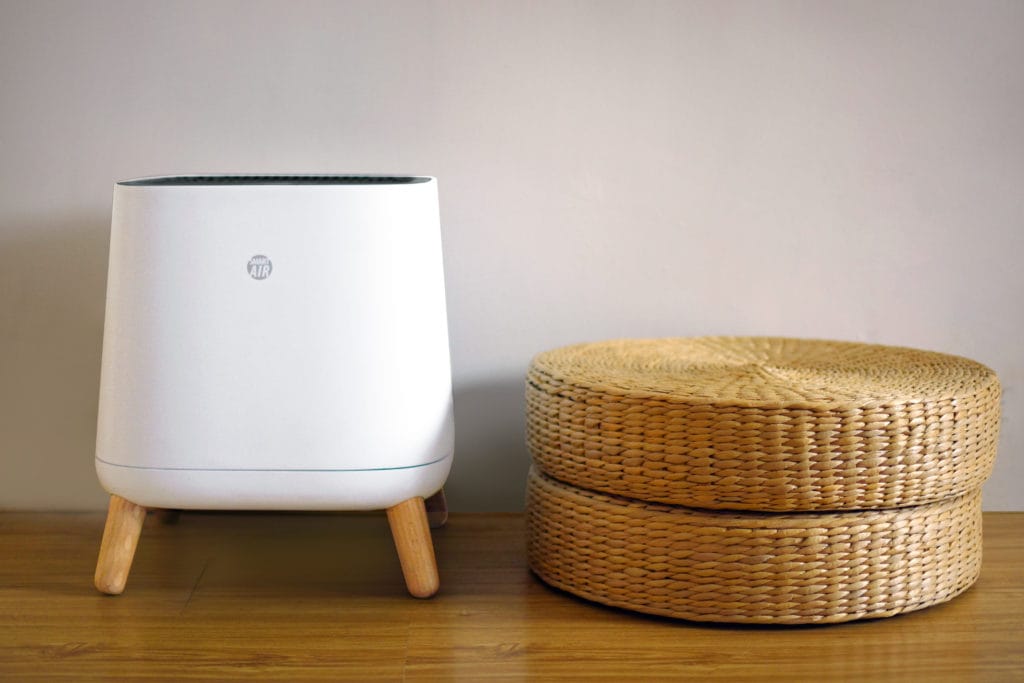
Sqair air purifier.
If you are concerned about indoor air pollution, an air purifier is the best option. When purchasing an air purifier, make sure to look for a HEPA filter. The HEPA filter indicates that a filter is capable of filtering out 99.97% of fine dust particles at 0.3 microns in diameter. This is the same level as that of an N100 respirator.
Germ Guardian True HEPA Filter | LEVOIT Air Purifier | Honeywell HPA300 True HEPA Filter
Further Reading and Resources
With all of this being said, I want to close this article with some further reading and resources that you can refer to if you want to learn more.
With air pollution being as big of a health concern as it is, I highly recommend only using academic and scientific materials. If you are unsure how to find these articles, you can find them on Google Scholar.
The WHO has some fantastic resources, and you can find them here. Other resources that you can refer to are:
- National Institute of Environmental Health Sciences
- The Lancet
- Medline Plus
- European Environmental Agency
If you have noticed any inaccuracies or still have questions after reading this post, please contact me here. Alternatively, you can contact me at [email protected]. I am always happy to receive questions or comments.
Is Air Pollution Dangerous?
Yes. Air pollution can impact every organ in the human body, and some studies suggest that it may impact even more. We are still uncovering new dangers nearly every day.
What Conditions Can Air Pollution Cause?
Air Pollution can lead to many coronary and respiratory diseases and conditions. However, it can also lead to hundreds of other conditions including depression, Alzheimer’s, diabetes, and more.
Can I Monitor The Air I Breathe?
Yes! Nearly every city in the world offers governmental AQI monitors. These can be accessed using many different AQI apps. For a more local reading, you can also find many different portable air quality monitors.
How Can I Minimise Dangers Caused by Air Pollution?
There are different strategies that can be used to minimise the health impacts of air pollution. Make sure to don a respirator when the AQI is bad, and when inside, make sure to have good ventilation and to minimise VOC sources.
What Pollutants Contribute to Air Pollution?
Although air pollution is a combination of hundreds of different pollutants, the most commonly discussed pollutant are PM1.0, PM2.5, PM10, ozone, carbon monoxide, nitrogen dioxide and sulphur dioxide.
Have Questions or Comments?
Join the discussion on the BreatheSafeAir Community Forum. Ask any questions you have about air quality or adjacent topics and get quick answers!